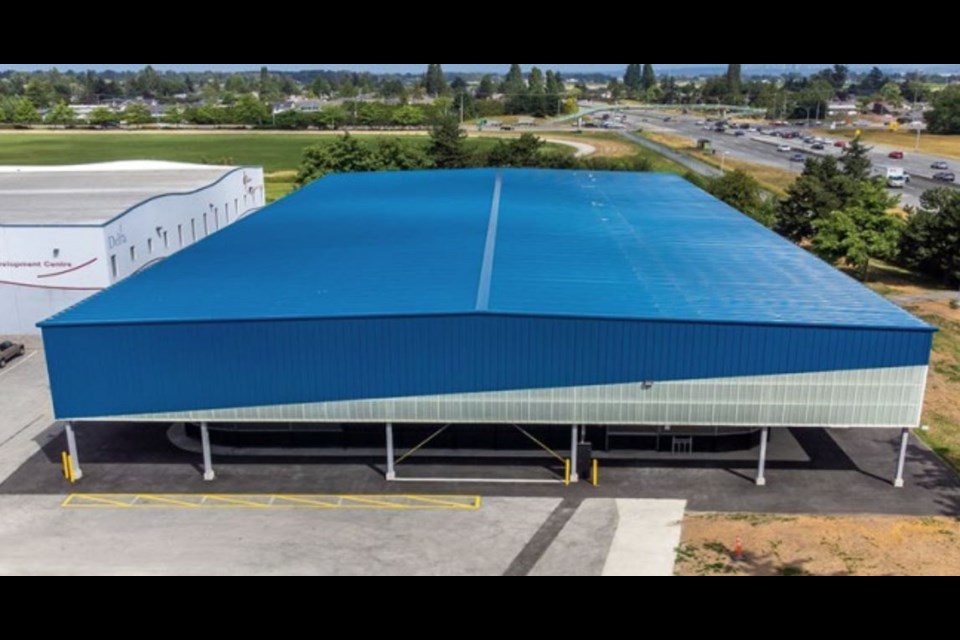It turns out putting a roof over an outdoor pool isn’t as simple as Burnaby city council would have liked.
After council decided earlier this year to cover Central Park Outdoor Pool with a tent-like roof structure to make it usable throughout the winter season, a new report with estimated costs just made things more complicated.
Staff presented council with two options for the pool roof cover at a meeting July 10.
The first, cheaper option would be a $3.8-million contract increase to cover the pool by itself, as originally requested by council, according to a staff report.
But the option “poses a number of limitations,” according to staff, who said there would be additional operating costs to rent temporary change rooms, showers and washrooms as the current facilities are uncovered and do not have water in the winter.
The report added, “Without upgrading existing mechanical systems, only minimum pool heating would be provided.”
The second, more expensive option, at total of $7.47 million, would cover the pool and change rooms with a winterized pre-engineered steel building with insulated panels and an HVAC system.
The building would have large garage doors that could be opened in the summer for “an open swimming experience” with skylights.
The report says the option would encourage year-round swim programs and eliminate the need for separate heated washrooms and change areas.
The structure could be disassembled and used elsewhere when Central Park Pool needs replacement, according to the report, though staff told council it would cost around $600,000 to move the structure.
‘A challenge operationally’
Both options are uncharted territory for Burnaby staff.
“This has never been done before,” Mary Morrison-Clark, the city’s general manager of parks and recreation, told council.
“I can’t find an example of where a city has covered an outdoor pool with this type of structure,” she said, acknowledging she isn’t aware of every covered pool.
“But we know that this will be a challenge operationally. We don’t have experience with this. We had staff on site last week trying to imagine some of the operational challenges that will be created.”
Some of those challenges include lifeguard sightlines due to the pool cover limiting the pool deck, as well as uncertainty over the air quality the structure would create with the HVAC system. The pool’s bulkhead, which is used for swim meets, is typically installed from above using a crane, but that won’t be possible with a roof covering the pool.
The pool, built in 1962, has a life expectancy of another five to 10 years and is “at or near the end of its useful life,” according to a previous staff report.
But that’s based on its regular operation as a summer outdoor pool.
“We’re going to be asking that pool to perform outside of its regular operating envelope and working into temperatures that outdoor pools are challenged to make,” Morrison-Clark said.
Councillors were not impressed with either option.
“I don’t like either one of these options,” Coun. Daniel Tetrault said.
He said he originally preferred the first option because it was low-cost and had a low operational impact.
He said the first option is “not that feasible” but questioned whether the second is “worth the cost given the life expectancy of the pool.”
“But I also understand the need for more pool space across the city, I so understand that we’re in a difficult dilemma.”
Council referred the report back to staff to bring forward more information and recommendations as soon as possible.
Mayor Mike Hurley, who slammed the parks department for not planning a replacement for C.G. Brown Pool (demolished late last year) and pressed to cover Central Park Pool, was not in attendance at the July 10 council meeting.





